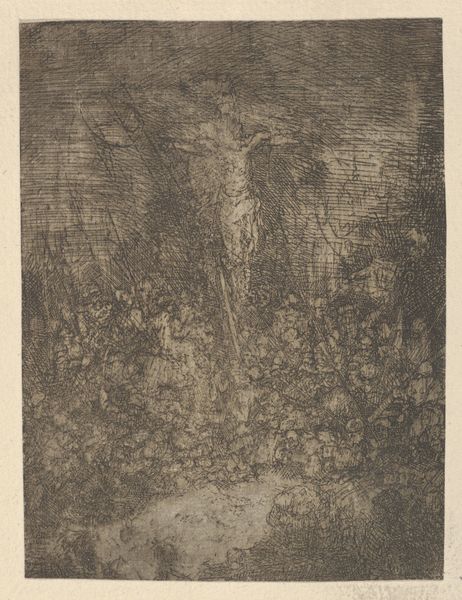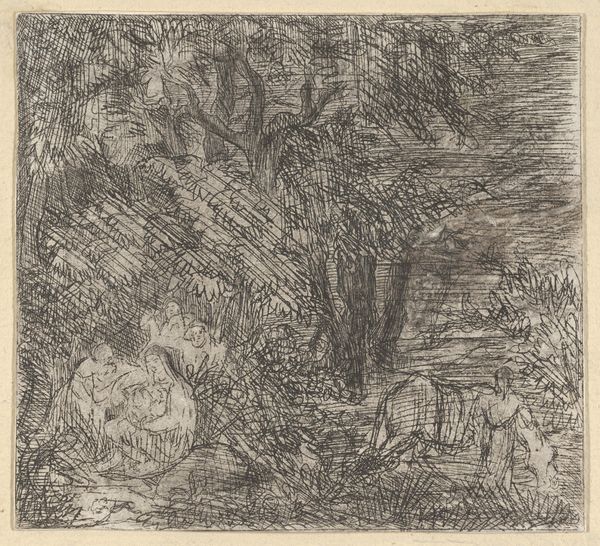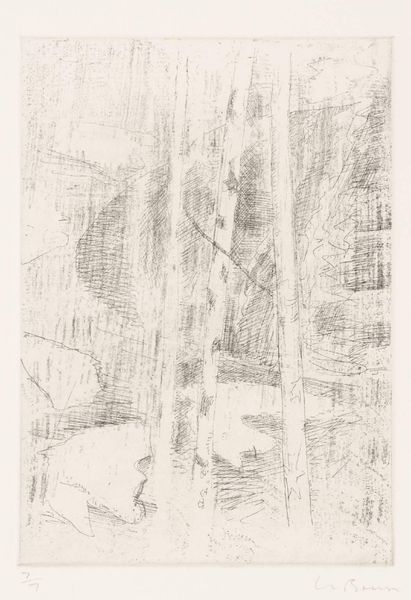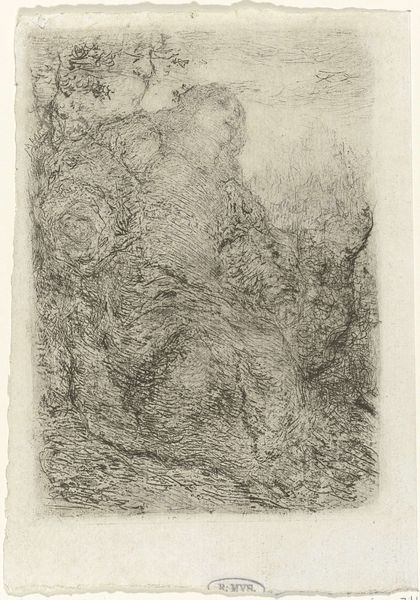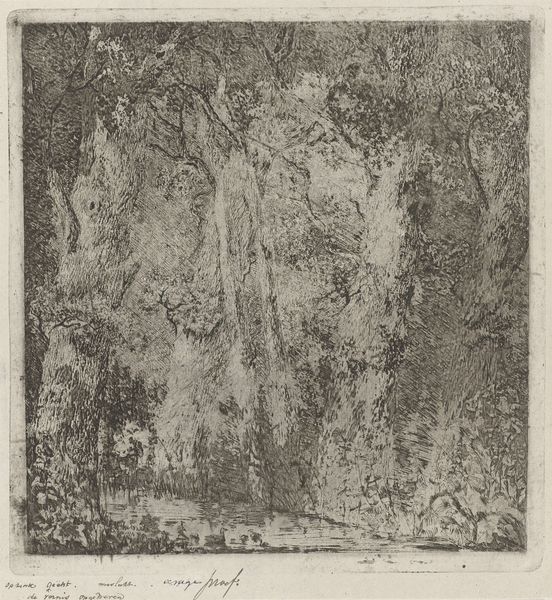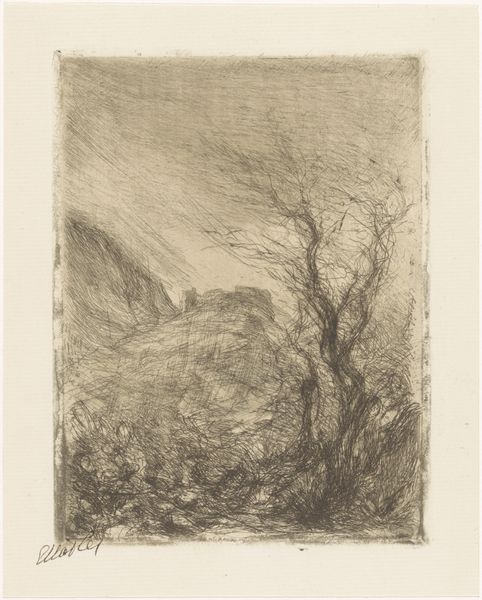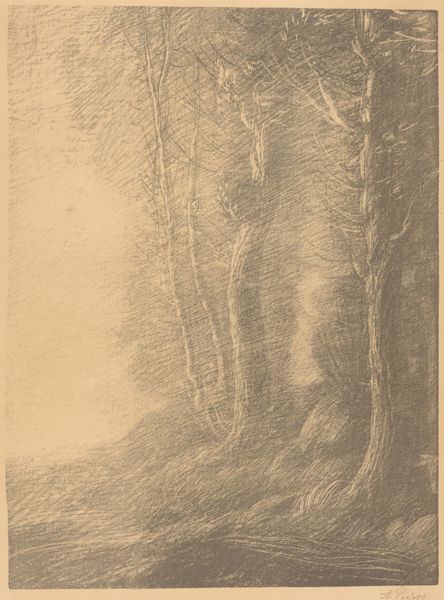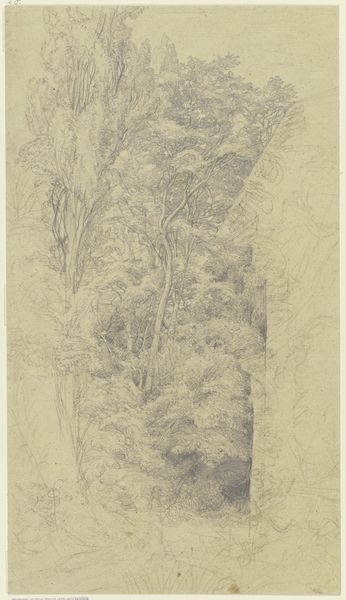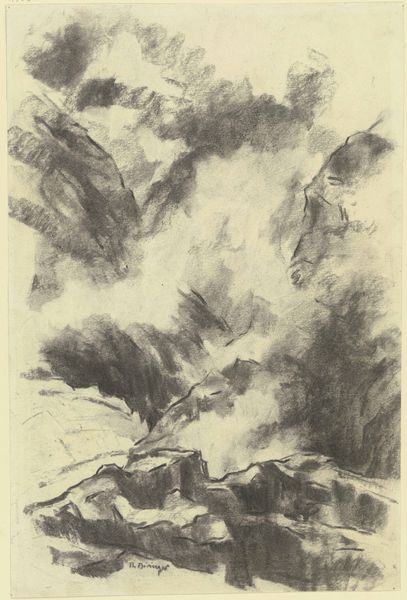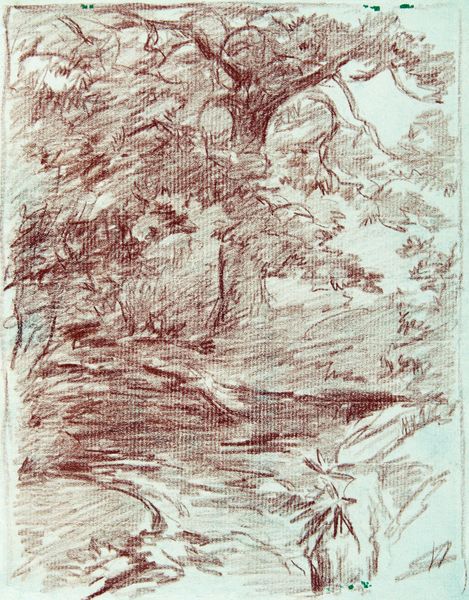
drawing, print, etching, graphite
#
drawing
# print
#
etching
#
landscape
#
german-expressionism
#
pencil drawing
#
mountain
#
expressionism
#
graphite
Dimensions: plate: 31.1 x 24.8 cm (12 1/4 x 9 3/4 in.) sheet: 56.8 x 39.7 cm (22 3/8 x 15 5/8 in.)
Copyright: National Gallery of Art: CC0 1.0
Editor: This etching, "Mountains," created in 1920 by Ernst Ludwig Kirchner, has a really unsettling mood, doesn't it? It feels less like a celebration of nature and more like a tormented vision. What do you see in this piece? Curator: The angst is palpable. Kirchner, deeply affected by his experiences in World War I, often depicted nature as a reflection of inner turmoil. While labeled as landscape, it becomes a powerful reflection of the societal anxiety that shaped his art and, really, all German Expressionism. The harsh lines, the almost chaotic composition, visually represent a world thrown into disarray. How does this relate to the politics of the time, do you think? Editor: I suppose the instability of the Weimar Republic mirrored in the fragmented depiction of the mountains. It’s as if the solid ground beneath one's feet is crumbling. Curator: Precisely. And think about the public role of art at the time. Expressionists like Kirchner were challenging traditional artistic conventions, but they were also questioning established social and political norms. This landscape isn't just about physical mountains; it’s a mountain of psychological and societal weight. The way museums chose, or often refused, to exhibit such works also becomes part of the story. It reflects how these socio-political tensions played out within the institutional art world. Editor: That makes so much sense! I never considered the gallery's choices being part of that wider tension. Curator: The history of display and reception matters greatly! The journey of this print from Kirchner’s studio to our view now has itself been shaped by cultural and political forces. Editor: I will definitely start thinking about art with these display factors in mind, rather than just its internal components. Curator: Excellent! By questioning how we view and present art, we uncover much richer understandings.
Comments
No comments
Be the first to comment and join the conversation on the ultimate creative platform.
